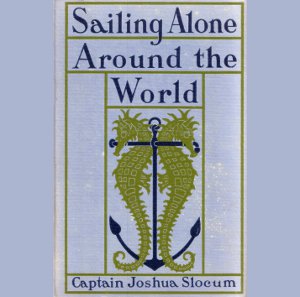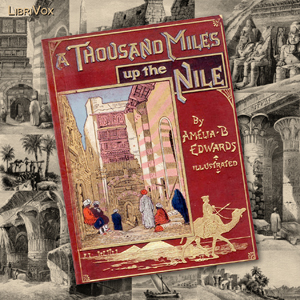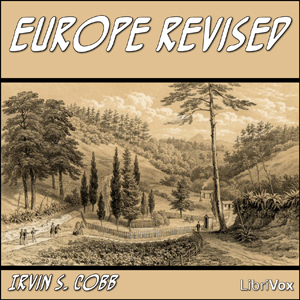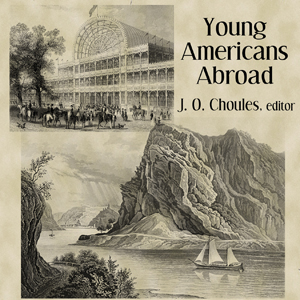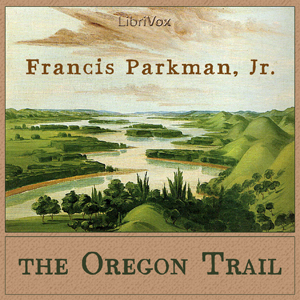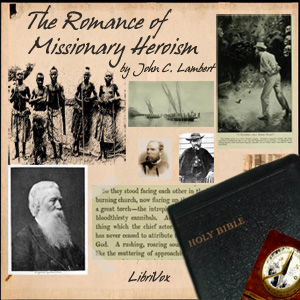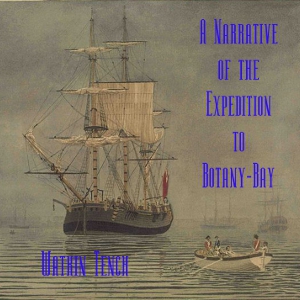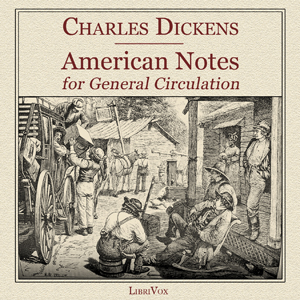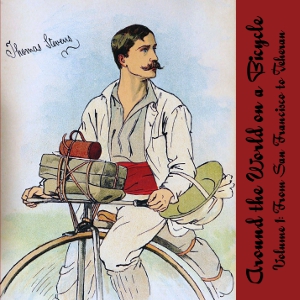This is a true account by American woman journalist who, in 1889, set out to see whether she could beat the fictional journey in Jules Verne’s 1873 novel, Around the World in Eighty Days. Wearing one dress and carrying one handbag, Elizabeth Cochrane Seaman (pen name “Nellie Bly”), reported her travels back to avid readers in America. (Summary by Mary Reagan)
18 episodes
Oku no Hosomichi (meaning Narrow Road to Oku [the Deep North]) is a major work by Matsuo Bashō.
Oku no Hosomichi was written based on a journey taken by Bashō in the late spring of 1689. He and his traveling companion Sora departed from Edo (modern-day Tokyo) for the northerly interior region known as Oku, propelled mostly by a desire to see the places about which the old poets wrote. Travel in those days was, of course, very dangerous to one’s health, but Bashō was committed to a kind of poetic ideal of wandering. He travelled for about 156 days all together, covering thousands of miles mostly on foot. Of all of Bashō’s works, Oku no Hosomichi is best known.
(Summary from Wikipedia)
5 episodes
John Muir's adventure guide for the Yosemite Valley.
25 episodes
While describing his dining experiences throughout "Bohemian San Francisco," Clarence Edwords paints an historic panorama of California cuisine with all its cosmopolitan influences. Best of all, he offers tantalizing recipes culled from conversations with the master chefs of 1914 in "The City by the Bay." (Summary by Denny)
18 episodes
1819 gerät das Handelshaus, bei dem Johanna Schopenhauer ihr ganzes Geld angelegt hat, in Zahlungsschwierigkeiten. Beim anschließenden Vergleich verliert sie 70% ihres Vermögens. Ihr Sohn Arthur (der Philosoph), der sich vorher den Anteil am väterlichen Erbe auszahlen ließ, verweigert die Unterstützung. Sie muss sich jetzt selbst um ihre Einkünfte sorgen. Lange Reisen wie die nach England sind ihr nicht mehr möglich. Ihre Schriftstellerei wird zu einer wichtigen Einkommensquelle. Sie veröffentlicht Reiseerzählungen, Romane und Novellen. (Zusammenfassung aus Wikipedia)
75 episodes
Diese 35 kurzen Reiseberichte entstanden, als Theodor Fontane 1852 zum zweiten Mal nach London reiste. Die Stadt faszinierte ihn, und sowohl die guten als auch die abstoßenden Seiten des Großstadtlebens hielt er mit spitzer Feder fest. (Zusammenfassung von Julia Claussen)
35 episodes
Joshua Slocum was the first man to sail around the world alone in a small boat. He personally rebuilt an 11.2 metre sloop-rigged fishing boat that he named the Spray. On April 24, 1895, he set sail from Boston, Massachusetts. More than three years later, he returned to Newport, Rhode Island, on June 27, 1898 having circumnavigated the world, a distance of 46,000 miles (74,000 km).
In 1899 he described the voyage in Sailing Alone Around the World now considered a classic of travel literature. It is a wonderful adventure story from the Age of Sail and a book of which Arthur Ransome declared, "boys who do not like this book ought to be drowned at once". (Summary by Alan Chant and Wikipedia)
22 episodes
Roughing It is semi-autobiographical travel literature written by American humorist Mark Twain. It was authored during 1870–71 and published in 1872 as a sequel to his first book Innocents Abroad. This book tells of Twain's adventures prior to his pleasure cruise related in Innocents Abroad.(Wikipedia)
82 episodes
Amelia B. Edwards wrote this historical, egyptological, and cultural study in in 1877, and it became an immediate best-seller, reprinted in 1888 at home in England and abroad. She travelled throughout Egypt at a time when most women didn't leave home. One of the pioneering Egyptologists of the age, she established the Edwards Chair of Egyptology, occupied first by the great Sir William Matthew Flinders Petrie.
This book is in a sense a seminal work, known to have influenced the modern writings of Elizabeth Peters in her Amelia Peabody Emerson murder-mystery series. (Summary by Sibella Denton)
75 episodes
Amelia B. Edwards wrote this historical travelogue in in 1873. The book describes her travels through a relatively un-visited area in the South Tyrol district of Italy. The Dolomites are a part of that most famous of mountain chains, the Alps.
In this book, the Writer and her friend and companion, L., travel from Southern Italy, having over-wintered there, to visit the Dolomite district. Her chatty style, dry sense of humor, accuracy of facts, and sympathy for humanity set her works apart. The slice of Victorian British life presented is quite captivating.
She would later travel throughout Europe and Egypt at a time when most women didn't leave home. Later she was to become one of the pioneering Egyptologists of the age. This is her first travelogue.
37 episodes
The book, also known as Darwin's Journal of Researches, is a vivid and exciting travel memoir as well as a detailed scientific field journal covering biology, geology, and anthropology that demonstrates Darwin's keen powers of observation, written at a time when Western Europeans were still discovering and exploring much of the rest of the world. Although Darwin revisited some areas during the expedition, for clarity the chapters of the book are ordered by reference to places and locations rather than chronologically. With hindsight, ideas which Darwin would later develop into his theory of evolution by natural selection are hinted at in his notes and in the book (Summary from Wikipedia).
48 episodes
The author, a British journalist and novelist, is interested in the feel of the places he visits. He describes at length a visit he has made to Egypt, with emphasis on the emotional response the places generate. (summary by Sibella)
23 episodes
Irwin Cobb's humorous Europe Revised is a travelogue and comedy almost in the style of Mark Twain. The dedication says it best, "To My Small Daughter
Who bade me shed a tear at the tomb of Napoleon, which I was very glad to do, because when I got there my feet certainly were hurting me."
51 episodes
Ida Pfeiffer travelled alone in an era when women didn't travel. She went first on a pilgrimage to the Holy Land, then went on to Egypt and Italy. Understanding the difficulties a woman would face travelling alone and on a budget, she made a will before she left. Go she did, however; and upon her return she wrote this book. She used the proceeds to finance her next trip - six months in Iceland. (Summary by Sibella Denton)
41 episodes
A short travelogue of Egypt, this book was written as part of an early 20th century series of travelogues on exotic destinations. (Summary by Sibella Denton).
10 episodes
As a girl, Lady Duff-Gordon was noted both for her beauty and intelligence. As an author, she is most famous for this collection of letters from Egypt. Lady Duff-Gordon had tuberculosis, and went to Egypt for her health. This collection of her personal letters to her mother and her husband. By all accounts everyone loved her, and the letters are very personal in style and content. The letters are as much an introduction to her person as a record of her life on the Upper Nile.
124 episodes
Mary Henrietta Kingsley (13 October 1862 – 3 June 1900) was an British explorer and writer who greatly influenced European ideas about Africa and its people. Kingsley was an outspoken critic of European colonialism, a champion for indigenous customs, and a dedicated campaigner for a revised British policy which supported traders and merchants over the needs of settlers and missionaries.Her adventures were extraordinary and fascinating. Among other things she fought with crocodiles, fell into native spear traps and was caught in a tornado on the slopes of Mount Cameroon. She traveled in West Africa wearing the same clothes she always wore in England: long, black, trailing skirts, tight waists, high collars and a small fur cap. These same clothes saved her life when she fell into a game pit, the many petticoats protecting her from being impaled on the stakes below.This is her story in her own words of her adventures and the people and culture of West Africa. (Summary by Kehinde)
29 episodes
"In preparation of this book the author has had in mind the needs of the upper grammar grades. The subject matter has not been selected with the object of covering the field of Western geography in a systematic manner, but instead the attempt has been made to picture as graphically as may be some of its more striking and interesting physical features, and the influence which these features have exerted upon its discovery and settlement." (from the Preface of The Western United States)
32 episodes

In American Notes, Rudyard Kipling, the Nobel Prize-winning author of the Jungle Book, visits the USA. As the travel-diary of an Anglo-Indian Imperialist visiting the USA, these American Notes offer an interesting view of America in the 1880s.Kipling affects a wide-eyed innocence, and expresses astonishment at features of American life that differ from his own, not least the freedom (and attraction) of American women. However, he scorns the political machines that made a mockery of American democracy, and while exhibiting the racist attitudes that made him controversial in the 20th century concludes “It is not good to be a negro in the land of the free and the home of the brave.”G. A. England of Harvard University (letter to The New York Times 10/11/1902) wrote: “To the American temperament, the gentleman who throws stones while himself living in a glass house cannot fail to be amusing; the more so if, as in Mr Kipling’s case, he appears to be in a state of maiden innocence regarding the structure of his own domicile.”(Summary by Tim Bulkeley with Quotations from the Gutenberg edition of American Notes and the online version of The New York Times of October 11th 1902.)
8 episodes
It’s 1851 and the Crystal Palace Exhibition is on in England. English American the Reverend Dr. Choules leaves Newport, Rhode Island with three teenaged students - James Robinson, George Vanderbuilt, and Weld French, who are forced to leave the fourth member of their blue-blooded quartet at home - and all four travelers promise to write to “Dear Charley”, Charles Duston, of later fame. The boys meet the Duke of Wellington, travel down the Rhine, and meet many friends along the way. While the letters are filled with some prejudice against the Catholic religion, they are a product of their time - a sometimes ignorant, but often dazzling, period of our history. (Summary by Sibella Denton)
56 episodes
Isabella Bird began travelling while in her early twenties to help alleviate illness that had plagued her since childhood. She was a single woman in her early forties when she made her treck through the Rocky Mountains. A Lady's Life in the Rocky Mountains details this fascinating account of her travels through a series of letters written to her sister, Henrietta. These letters are filled with beautiful, vivid descriptions of the scenery, the people she encountered, the way of life, and a mountain man named Jim Nugent, that was as rough as they come, but a complete gentleman with Ms. Bird. She has the distinction of being the first woman to become a member of the Royal Geographical Society in 1892. (Summary by Laura Caldwell)
23 episodes
The book is a breezy, first-person account of a 2 month summer tour of the U.S. states of Nebraska, Wyoming, Colorado, and Kansas when Parkman was 23. (Summary by Wikipedia)
27 episodes
Walter Besant was a novelist and historian, and his topographical and historical writings, ranging from prehistoric times to the nineteenth century, were probably best known through the detailed 10-volume Survey of London published after his death.
This earlier single volume covers, in less depth, the whole period from prehistory until the 19th century. The book appears originally to have been written for boys, and, indeed, the chapters are called "Lessons". However, it is a very readable history and provides a fascinating insight into both London's past and the government of the City at the time the book was written (1894). (Summary by Ruth Golding)
28 episodes
“Let me begin my American impressions with two impressions I had before I went to America. One was an incident and the other an idea; and when taken together they illustrate the attitude I mean. The first principle is that nobody should be ashamed of thinking a thing funny because it is foreign; the second is that he should be ashamed of thinking it wrong because it is funny.” (Gilbert Keith Chesterton)
32 episodes

The Germania (Latin: De Origine et situ Germanorum, literally The Origin and Situation of the Germans), written by Gaius Cornelius Tacitus around 98, is an ethnographic work on the Germanic tribes outside the Roman Empire. Germania fits squarely within the tradition established by authors from Herodotus to Julius Caesar. Tacitus himself had already written a similar essay on the lands and tribes of Britannia in his Agricola. The Germania begins with a description of the lands, laws, and customs of the Germanic people; it then segues into descriptions of individual tribes, beginning with those dwelling closest to Roman lands and ending on the uttermost shores of the Baltic, among the amber-gathering Aesti, the primitive and savage Fenni, and the unknown tribes beyond them.
Tacitus’ descriptions of the Germanic character are at times favorable in contrast to the opinions of the Romans of his day. He holds the strict monogamy and chastity of Germanic marriage customs worthy of the highest praise, in contrast to what he saw as the vice and immorality rampant in Roman society of his day, and he admires their open hospitality, their simplicity, and their bravery in battle. One should not, however, think that Tacitus’ portrayal of Germanic customs is entirely favorable; he notes a tendency in the Germanic people for what he saw as their habitual drunkenness, laziness, and barbarism, among other traits. Tacitus says that physically, the Germans appeared to be a distinct race, not an admixture of their neighbors. In Chapter 4, he mentions that they have common characteristics of blue eyes, blond or reddish hair and large size.
In Chapter 7, Tacitus describes their government and leadership as somewhat merit-based and egalitarian, with leadership by example rather than authority and that punishments are carried out by the priests. He mentions that the opinions of women are given respect. In Chapter 9, Tacitus describes a form of folk assembly rather similar to the public Things recorded in later Germanic sources: in these public deliberations, the final decision rests with the men of the tribe as a whole.
Tacitus further discusses the role of women in Chapters 7 and 8, mentioning that they often accompany the men to battle and offer encouragement. He says that the men are often motivated to fight for the women because of an extreme fear of their being taken captive. Tacitus says that the Germans are mainly content with one wife, except for a few political marriages, and specifically and explicitly compares this practice favorably to other barbarian cultures, perhaps since monogamy was a shared value between Roman and Germanic cultures. He also records that adultery is very rare, and that an adulterous woman is shunned afterward by the community regardless of her beauty.
This translation by Alfred John Church and William Jackson Brodribb, was first published in 1877. (Summary from Wikipedia.)
3 episodes
By his own admission, Thomas Frost found it hard to make a living from his writing, and no doubt he used the name of Dickens in the title of this book to boost sales. Frost tells a good tale, and the book is not only of interest to enthusiasts of Dickens and the county of Kent.He includes some of Dickens' own descriptions of locations, as well as regaling us with anecdotes about towns and villages which he visits, including an account of the last armed rising on British soil - the Battle of Bossenden Wood.As well as accounts of his travels through the highways and byways of Kent in the footsteps of Dickens and his characters, he also wanders into the lanes of myth and legend, sometimes making up his own stories along the way.After managing to forgive his cardinal sin of confusing Men of Kent and Kentish Men in the first chapter, I found this rather odd mixture of memoir, short stories and literary travelogue a most enjoyable read. (Summary by Ruth Golding)
14 episodes
The title page gives this book the subtitle, “True stories of the intrepid bravery and stirring adventures of missionaries with uncivilized man, wild beasts, and the forces of nature in all parts of the world.” The thrilling accounts in this collection include stories of Jacob Chamberlain’s medical ministry in India, the dangers faced by Alexander Mackay in Uganda, James Chalmers’ work among the headhunters of New Guinea, John Paton’s mission to the South Sea cannibals, and the Hawaiian queen Kapiolani’s challenge to the gods of the volcano. “Romantic” in the sense that these brave missionaries faced the unknown, but never “romanticized” – all sacrificed home and luxury, and many suffered the loss of family, fortune, and even their lives. (Summary by D. Leeson)
24 episodes

After the bizarre textual antics of "Tristram Shandy", this book would seem to require a literary health warning. Sure enough, it opens in mid-conversation upon a subject never explained; meanders after a fashion through a hundred pages, then fizzles out in mid-sentence - so, a plotless novel lacking a beginning, a middle or an end. Let us say: an exercise in the infinitely comic.
"There is not a secret so aiding to the progress of sociality, as to get master of this short hand, and to be quick in rendering the several turns of looks and limbs with all their inflections and delineations, into plain words."
Sterne calls his fine sensitivity to body language (as we now term it) "translation". Much of the pleasure to be had from this wonderfully engaging book comes from his unmatched ability to extract random details from the chaos of experience to create comic turns imbued with Feeling. His Parson Yorick is the Sentimental Traveller: certainly a Man of Feeling, but one in whom "Nature has so wove her web of kindness, that some threads of love and desire are entangled with the piece..." (Summary by Martin Geeson)
25 episodes

“Beasts, Men and Gods” is an account of an epic journey, filled with perils and narrow escapes, in the mold of “The Lord of the Rings.”
The difference is: it’s all true.
Ferdinand Ossendowski was a Pole who found himself in Siberia and on the losing side during the Bolshevik Revolution. To escape being rounded up and shot, he set out with a friend to reach the Pacific, there to take ship back to Europe. During his journey he fell in with dozens of other military men who shared the same objective… but nearly every one of them perished on the way.
It’s up to you to decide whether Ossendowski was threatened most by the beasts, by the men, or by the gods, or indeed, by the severe and uncompromising landscapes of Siberia, Mongolia, and China. That he survived at all seems improbable. The mystical mysteries and magics of Buddhism, “The Yellow Faith”, were woven about and through his sojourn and had no little part in his survival. Time after time he was put in the delicate position of being the bargainer between warring groups, and ultimately, only incredible luck and his friendship with the Hutuktu of Narabanchi Monastery saw him through.
When published in the United States, this book caused a sensation and became a best-seller. (Summary by Mark F. Smith)
36 episodes
A charming brief account of a two months' autumnal stay on the shores of the Lake of Geneva. Howells, who was there with his family traveling from England to Italy, has a sharp eye not only for scenery and architecture, but for people and customs, both Swiss and foreign. (Summary by Nicholas Clifford)
2 episodes
East by West: a Journey in the Recess is an account of British journalist Henry Lucy's travels across America and on to the Far East during the parliamentary recess in 1883. Lucy was one of the most influential journalists of his day and, as "Toby M.P.", a noted humorist in Punch magazine. His acute powers of observation and light touch make this a most engaging book. It is a fascinating insight into the Englishman's travels abroad within two decades of the American Civil War and the end of Japanese isolationism.This is the first of two volumes covering his journey with his wife. This first volume includes his travels in America and in Japan, including the Atlantic and Pacific crossings by steamer. Volume II, which is also available here as an audio recording, continues his experiences in Japan and India, returning home via Aden and the Suez Canal. (Introduction by Ruth Golding)
19 episodes
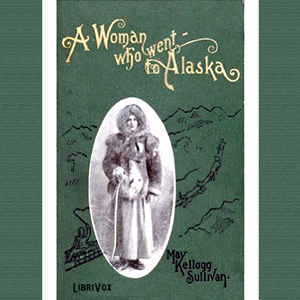
Alaska has only been a state since 1959, and the breathtaking terrain remains mostly unspoiled and natural. In modern times, many of us have had the pleasure of visiting Alaska via a luxurious cruise ship, where we enjoyed gourmet meals, amazing entertainment, and a climate-controlled environment. It's easy to also book a land package that enables you to see more of the country by train.Imagine what it was like to visit the same wild, untamed countryside in 1899. Instead of boarding a sleek, stylish cruise ship, you travel for weeks on a steamer. You wait 2 weeks for the open, flat cars of the new railrod just to assure yourself it can travel safely through the dangerous mountain pass. No stately cabin or grand hotel awaits you at the end of your journey; you'll spend your time in rough mining camps. Such is the case in May Kellogg Sullivan's spellbinding and vivid account of her Alaskan adventures, which occurred over 18 months during 2 solo trips covering 12,000 miles. This is the perfect travel narrative to enjoy on your Alaskan cruise or in the comfort of your own home. (Introduction by Karen Commins)
28 episodes
In 1879 John Muir went to Alaska for the first time. Its stupendous living glaciers aroused his unbounded interest, for they enabled him to verify his theories of glacial action. Again and again he returned to this continental laboratory of landscapes. The greatest of the tide-water glaciers appropriately commemorates his name. Upon this book of Alaska travels, all but finished before his unforeseen departure, John Muir expended the last months of his life. (Summary by William Frederic Bade)
21 episodes
In 1844 reisde Charles Dickens samen met zijn gezin enkele maanden naar Frankrijk en Italie waar hij Rome, Napels, Venetie en Florence bezocht. In dit reisverslag leren we Charles Dickens kennen als een matineuze wandelaar. (vrij naar Wikipedia)De vertaler van deze uitgave uit 1889 is onbekend
23 episodes
In this chronicle of a summer's motoring in Britain I have not attempted a guide-book in any sense, yet the maps, together with the comments on highways, towns, and country, should be of some value even in that capacity. I hope, however, that the book, with its many illustrations and its record of visits to out-of-the way places, may be acceptable to those who may desire to tour Britain by rail or cycle as well as by motor car. Nor may it be entirely uninteresting to those who may not expect to visit the country in person but desire to learn more of it and its people. (Introduction by Thomas Dowler Murphy)
20 episodes

"Schetsen uit Amerika", een Nederlandse vertaling van "American Notes" (vertaler onbekend), is een reisverslag van Charles Dickens waarin hij zijn eerste bezoek aan de Verenigde Staten beschreef. Deze reis vond plaats in 1842 en zijn verblijf duurde zes maanden, van januari tot en met juni. Hij werd vergezeld door zijn vrouw Catherine.Na een zware overtocht op het overvolle schip Britannia van de Cunard Line kwam hij aan in Boston, waar hij, als reeds internationaal gevierd schrijver, een warm welkom kreeg. Dickens bereisde vervolgens voornamelijk de oostkust en het gebied van de Grote Meren. Ook bezocht hij president John Tyler in het Witte Huis.Dickens steekt zijn bewondering voor de Amerikaanse vorm van democratie niet onder stoelen of banken. Niettemin blijkt er sprake van een haat-liefde verhouding. Hij maakte een groot aantal kritische en zure opmerkingen, niet in de laatste plaats over het onderwerp auteursrechten. Zijn werken werden in Amerika volop gelezen, maar aangezien er geen internationale overeenkomst bestond op het gebied van copyright, verschenen zijn boeken in niet-geautoriseerde vorm en ontving de schrijver hiervoor geen cent. Ook parodieerde hij de gewoonten en gesprekken van de doorsnee Amerikaan en was hij geïrriteerd over de in zijn ogen onbeschaamde opdringerigheid van zijn bewonderaars. Ook de nog heersende slavernij was hem een doorn in het oog en hij gaf hier niet-malse kritiek op. Een en ander werd hem door de Amerikanen, die hem toch vriendelijk hadden ontvangen en zijn hele bezoek goed hadden geregeld, niet in dank afgenomen. De ervaringen tijdens zijn reis vormden de inspiratie voor zijn roman Martin Chuzzlewit, dat in de Verenigde Staten koel werd ontvangen, maar de lezers er verder niet van weerhield zijn boeken te blijven lezen.(Introductie uit Wikipedia)
32 episodes
Watkin Tench was an officer of the British Marines in the First Fleet to settle NSW. This is an interesting and entertaining account of his experiences during that time (Introduction by Tabithat)
8 episodes
This is a collection of city stories, fiction or non-fiction, in English and published before 1923. Contributions have been chosen by the readers themselves. Summary by BellonaTimes.
10 episodes
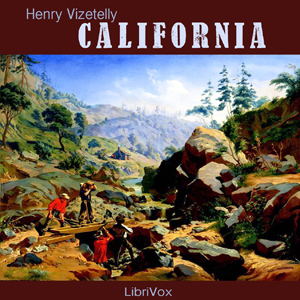
Henry Vizetelly, writing under the pseudonym J. Tyrwhitt Brooks, recalls an expedition to California he took between 1847-1848 . Originally, he planned to enlist as a surgeon for the US Army during the Mexican war, but conflicts had ended by the time he applied. In a quick change of plans, he joined a group of prospectors on their way to the newly found gold fields of California. While he might not find service in the military, his training as a physician made him a valuable addition to the ragtag team of explorers.His training as a physician gives us an exacting perspective of the events and people who struck out from more sedate routines to prospect gold in the Californian wilderness. However, he is unprepared to find a cure for the gold fever that has depopulated the surrounding towns. Only one member of the group, an experienced fur-trapper, is able to resist the lustrous lure of nuggets, flakes and gold richly deposited in the dusty desert.Like the others who have left jobs to prospect for gold, he learns how to live on the land and struggle through hardship away from the security of city life. His motley group of changing characters ride through sudden fortunes and disasters while meeting Mormons, Indians and not least of all a bountiful harvest of gold. Before he returns to his home in England, another quick change of fortune undoes his plans for a comfortable retirement and shows us the extent of greed that has sprung up in the mining camps.
9 episodes
Originally published in 1825 under the title: Sketches of New Brunswick : containing an account of the first settlement of the province, with a brief description of the country, climate, productions, inhabitants, government, rivers, towns, settlements, public institutions, trade, revenue, population, &c., by an inhabitant of the province. The value of this history is in the fact that it was written when the Province was still in its infancy. Although there had been a few small settlements established in New Brunswick prior to 1783, the main influx of settlers were Loyalists who chose to remove to the area from the United States following the American Revolution. (Summary from text with additions by Roger Melin)
20 episodes
Norie's series of piloting and sailing directions was something of a staple in the chart-room of 19th century British (and other) merchant vessels. The description of landmarks and ports, as well as the rules and regulations provide another viewpoint to an earlier age. Please note that these piloting directions are rather completely out of date. They are given here for purposes of historical interest only, and should not be used for navigation purposes. (Summary by P Hirvonen)
7 episodes
American Notes for General Circulation is a travelogue by Charles Dickens detailing his trip to North America from January to June, 1842. While there he acted as a critical observer of these societies almost as if returning a status report on their progress. This can be compared to the style of his Pictures from Italy written four years later, where he wrote far more like a tourist. His American journey was also an inspiration for his novel Martin Chuzzlewit. (Summary by Wikipedia)
22 episodes

Fortress-walled Saint Catherine's monastery on the Sinai peninsula has been a pilgrimage site since its founding by the Byzantine Emperor Justinian in the 6th century. According to tradition, the monastery sits at the base of the mountain where Moses received the Tablets of the Law. Set in rugged country, accessible in times past only by a many days journey by camel across barren desert, the monastery survived intact through the centuries, and, as a result, became a rich repository of religious history—told through its icons, mosaics, and the books and manuscripts in the monastery library.
Our Journey to Sinai by Agnes Bensly is the story of a visit to Saint Catherine's by a group of British scholars in the 1890's, who were drawn there in quest of manuscripts from early Christian times. The group had one particular prize in their sights. It was a second century translation of the Gospels from Greek into an Aramaic dialect called Syriac. This was a rare find indeed. One of the group, Agnes Smith Lewis, an accomplished linguist, had been to the monastery once before. On that visit, she had spotted a “palimpsest of most venerable appearance,” a palimpsest being a parchment (leather) paged book, which had been used to write on at two different times, the first set of writing having been partially scraped off the parchment before it was reused. Agnes Smith Lewis had recognized the hidden underwriting in this book to be in Syriac, “the native language of Our Lord and His disciples.” And now, the excited group had decided to revisit Saint Catherine's, in hopes of copying and reading the ancient text. Their trip is vividly described by Agnes Bensly --bustling Cairo; a tent and camel crossing of the desert with Bedouin guides; the monks and monastery life; a breathtaking climb up 3000 stone steps to the top of Mount Sinai, and what they found in the mysterious manuscript they had come so far to see.
Our Journey to Sinai, while providing a glimpse into the complexities of Bible scholarship, is also a wonderful travel book and an intimate portrait of Saint Catherine's monastery—a monastery which is, today, a World Heritage Site. (Introduction by Sue Anderson)
10 episodes
The county of Lancashire in the north-west of England is best known as the engine room of the nineteenth-century Industrial Revolution. Steering clear of the industrial districts, F. A. Bruton takes the reader on an engaging tour of the county's beauty spots and lesser known landscapes. Taking the view that the charm of a district is nothing without its historical associations, Bruton packs his account with historical detail and literary references to, among others, Leland, Wordsworth, Ruskin, Arnold, and Mrs. Carlyle. (Introduction by Phil Benson)
16 episodes

Birdseye Views of Far Lands is an interesting, wholesome presentation of something that a keen-eyed, alert traveler with the faculty of making contrasts with all classes of people in all sorts of places, in such a sympathetic way as to win their esteem and confidence, has been able to pick up as he has roamed over the face of the earth for a quarter of a century.The book is not a geography, a history, a treatise on sociology or political economy. It is a Human Interest book which appeals to the reader who would like to go as the writer has gone and to see as the writer has seen the conformations of surface, the phenomena of nature and the human group that make up what we call a "world."The reader finds facts indicating travel and study set forth in such vigorous, vivid style that the attention is held by a story while most valuable information is being obtained. The casual reader, the pupil in the public school and student in the high school, professional men and women, will all find the book at once highly interesting and instructive. In no other book with which I am acquainted can so much that is interesting be learned of the world in so short time and in such a pleasing way.Teachers in rural schools will find the book especially helpful. It will inspire the pupils in the upper grades in these schools to do some observation work themselves and to in this manner seek to learn their own localities better, while at the same time it will suggest the collection of materials about other countries, their peoples, products, characteristics and importance from sources other than text books.Every rural school as well as every high school and public library in the land should have one or more copies of this book. (Summary from book's Introduction.)
28 episodes
Thomas Stevens was the first person to circle the globe by bicycle, a large-wheeled Ordinary. His journey started in April 1884 in San Francisco from where he cycled to Boston to take a steamer to England. Crossing England, France, Central Europe and Asia Minor before he was turned back at the borders of Afghanistan. He returned part of the way to take a ship to Karachi, from where he crossed India. Another steam ship brought him from Calcutta to Hong Kong, and from Shanghai he set over to Japan, finally ending his journey after actually cycling 13.500 miles in Yokohama, December 1886.
This is the first volume of his travel experiences, detailing the part of the journey from San Francisco to Teheran, where he spent the winter. (Summary by Availle)
45 episodes

East by West: a Journey in the Recess is an account of British journalist Henry Lucy's travels across America and on to the Far East in 1883, within two or three decades of the American Civil War, the Indian Mutiny and the end of Japan's isolation from the western world. Lucy was one of the most influential journalists of his day and, as "Toby M.P.", a noted humorist in Punch magazine. His acute powers of observation and light touch make this a most engaging book. This is the second of two volumes and covers his experiences in Japan, India and other parts of south-east Asia, returning home via Aden and the Suez Canal. The first volume included his travels in America and in Japan, including the Atlantic and Pacific crossings by steamer.Note: In Chapter 6, Lucy understandably, to a readership wholly unfamiliar with Japan, includes lengthy statistics about Japan's systems and economy. While the reader of the text can glance at such tables and move swiftly on, this is not possible in an audiobook. Accordingly, I have made two versions of Chapter 6. The first version is completely unabridged. In the alternative file, 6alt, I have excised the longest statistical tables. (Summary by Ruth Golding )
25 episodes
An unlikely pair of wanderers they were; the orphan girl Lou and her travelling partner Jim Botts. Jim appeared in need of following some apparent 'rules' during the journey, while Lou seemed in need of better clothing, and perhaps some refinement. But who was most benefitting whom on the week-long journey from rural village to big city? And which of the two was willing to try anything once? (Introduction by Roger Melin)Written by Isabel Ostrander under the pseudonym Douglas Grant.
9 episodes

National Geographic Magazine Volume 3, articles published in 1891 and 1892.
South America: Annual Address by the President, Gardiner G. Hubbard
Geography of the Land: Annual Report by Vice-President Herbert G. Ogden
Geography of the Air: Annual Report by Vice-President A. W. Greely
An Expedition to Mount St. Elias, Alaska
Introduction. The Southern Coast of Alaska
Part I. Previous Explorations in the St. Elias Region
Part II. Narrative of the St. Elias Expedition of 1890
Part III. Sketch of the Geology of the St. Elias Region
Part IV. Glaciers of the St. Elias Region
Part V. Height and Position of Mount St. Elias
Appendix A. Official Instructions governing the Expedition
Appendix B. Report on topographic Work
Appendix C. Report on auriferous Sands from Yakutat bay
Appendix D. Report on fossil Plants
The Cartography and Observations of Bering's First Voyage
Height and Position of Mount St. Elias
The Heart of Africa
Report of Committee on Exploration in Alaska
Notes:
La Carte de France, dite de l'Etat Major
Polar Regions
The crossing of Tibet
Statistics of Railways in United States
29 episodes





